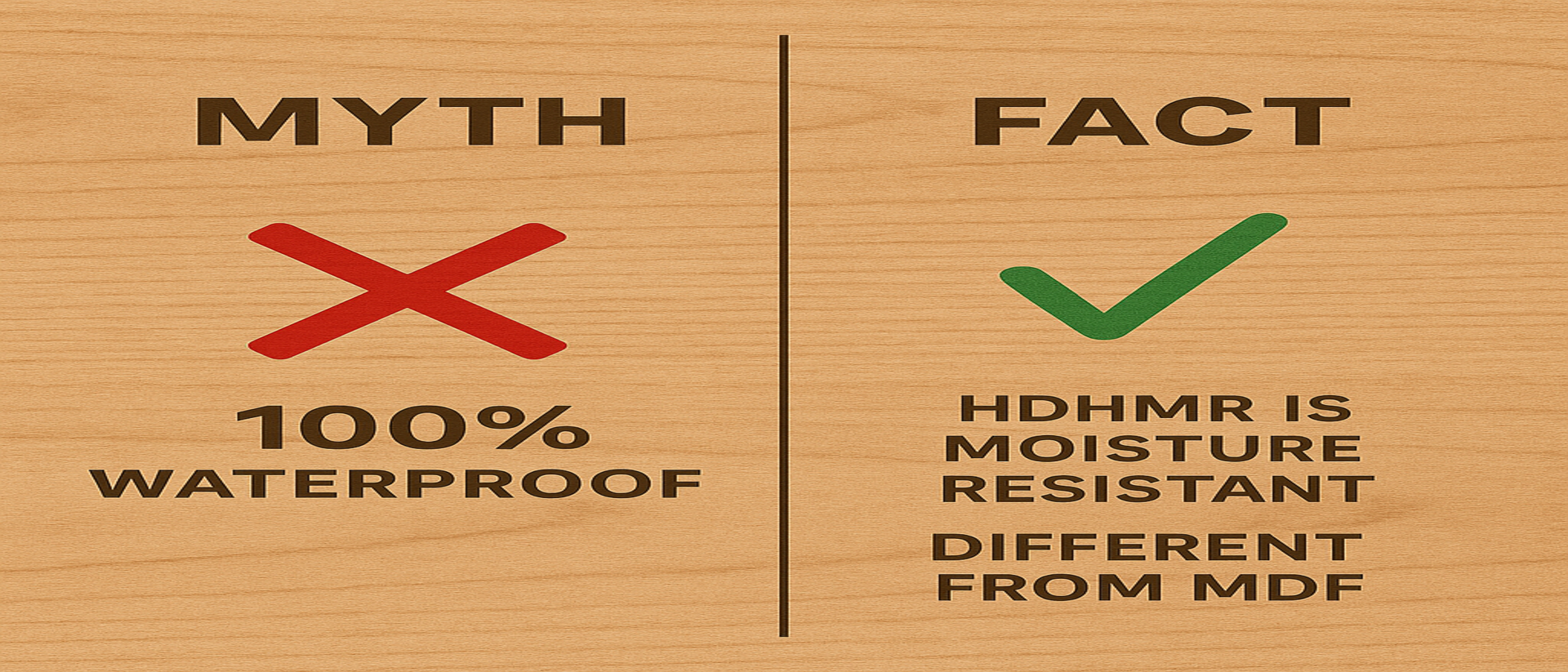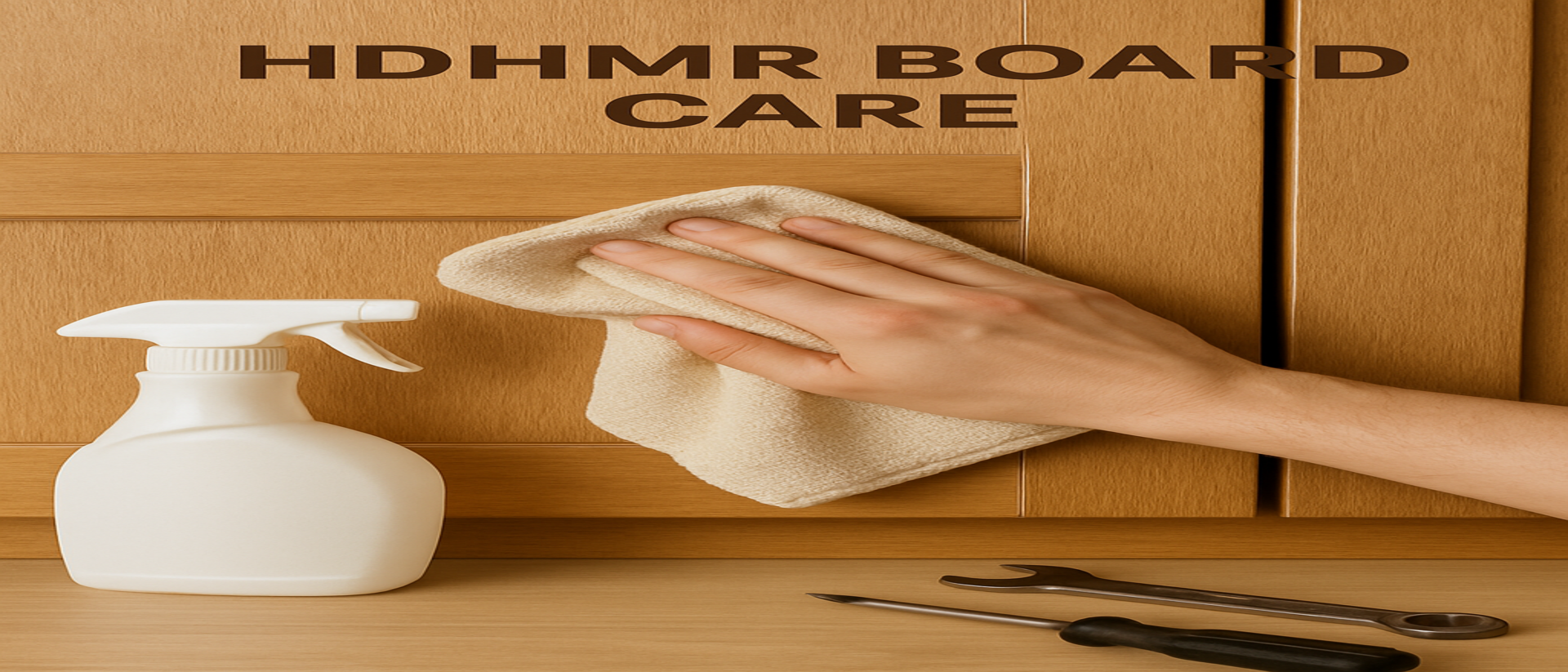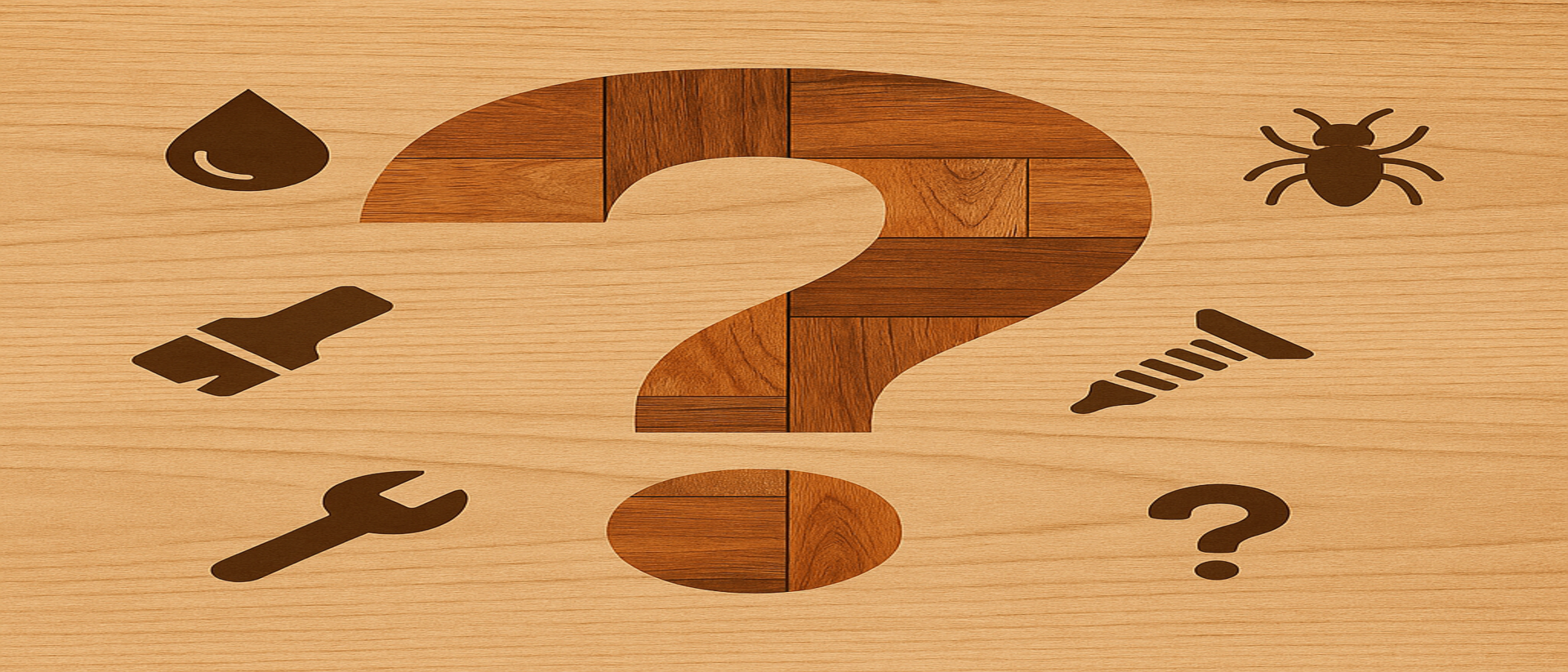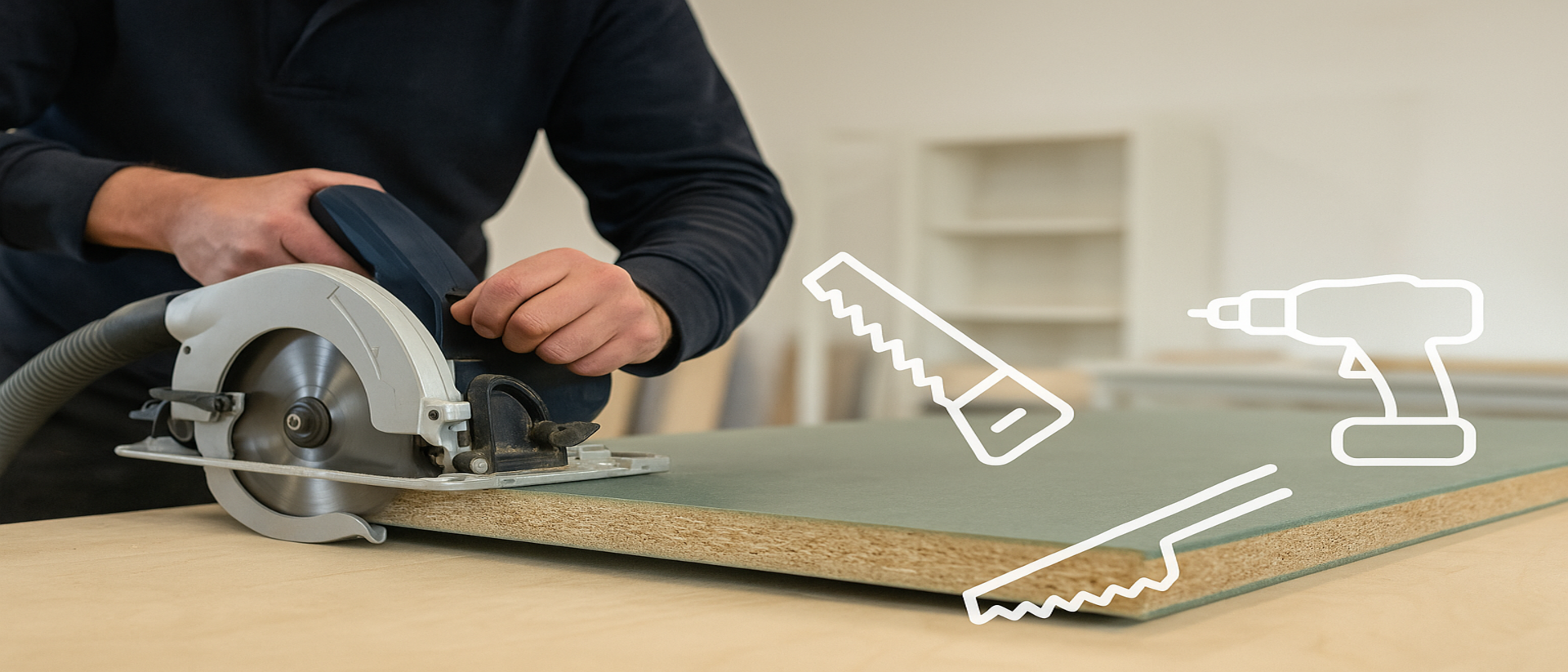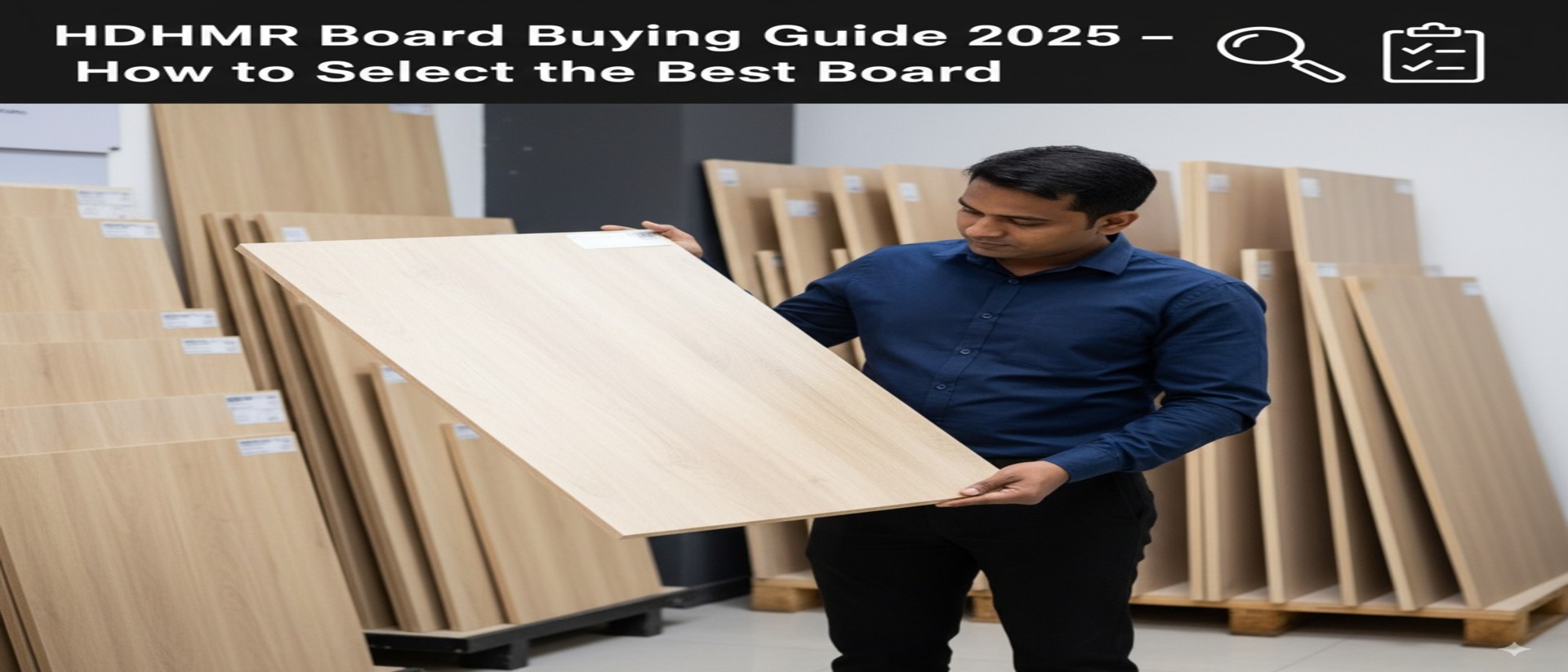Introduction – Why Debunk HDHMR Myths?
When a new material gains popularity, misinformation quickly follows. High Density High Moisture Resistant (HDHMR) boards have become a staple of modular kitchens and wardrobes in India, yet confusion persists. Some homeowners hesitate to use HDHMR because they’ve heard it’s just rebranded MDF. Others think it’s a miracle product that can replace marine plywood everywhere. Such myths can lead to poor material choices, unexpected maintenance issues or missed opportunities.
To help you navigate the facts, this article addresses common HDHMR myths and contrasts them with reality. Each myth is introduced as a claim we’ve seen online or heard from clients. We then present data and citations (primarily from Building & Interiors and CenturyPly’s educational posts) to clarify the truth. By the end, you’ll understand what HDHMR can – and cannot – do, and you’ll be empowered to choose materials wisely.
For further reading on applications, see our detailed guides on [Internal Link: hdhmr-board-doors-pros-cons], [Internal Link: hdhmr-board-bathroom-usage] and brand reviews in [Internal Link: century-ply-hdhmr-board-review] and [Internal Link: greenpanel-hdhmr-board-review].
Myth 1: “HDHMR is the same as HDF/MDF”
The Myth
A prevalent belief is that HDHMR is nothing more than standard MDF or HDF sold under a fancy name. Some social media posts claim that all these boards are identical because they’re made from wood fibres. This myth often arises because the boards look similar and share a fibreboard lineage.
The Fact
While HDHMR, MDF (medium density fibreboard) and HDF (high density fibreboard) all belong to the family of fibreboards, their composition and properties differ significantly. HDHMR boards are made from fibre chips and wood waste bonded with moisture‑resistant resins, then compressed to higher densities than standard MDF. They are designed specifically for high moisture resistance, whereas regular MDF is prone to swelling.
HDF typically refers to fibreboard used in flooring and has a higher density but does not necessarily include moisture‑resistant additives. HDHMR sits between MDF and HDF in density but excels in moisture resistance. Building & Interiors confirms that HDHMR boards are waterproof and less likely to warp, a property not shared by standard MDF. Therefore, HDHMR is not just “rebranded” MDF; it’s engineered for a different purpose.
If you’re deciding between materials, check our comparison [Internal Link: hdhmr-vs-mdf-vs-plywood-comparison] to understand which suits your project.
Myth 2: “HDHMR Board is 100% Waterproof”
The Myth
Many marketing brochures and sales pitches imply that HDHMR is 100 % waterproof, leading some buyers to use it in shower areas or exterior settings. Homeowners sometimes assume they don’t need to laminate or seal the boards.
The Fact
HDHMR boards are highly moisture resistant but not entirely waterproof. The Building & Interiors FAQ states that HDHMR boards can tolerate high humidity levels without warping or swelling and are less likely to warp. However, it also recommends laminating or veneering and sealing edges to maintain strength.
If edges are left unsealed, water can penetrate the fibres, causing swelling or delamination. Prolonged exposure to standing water (e.g., inside a shower) will damage HDHMR. Even CenturyPly’s blog acknowledges that HDMR boards tend to bend and lose shape after long‑term use, especially if water penetrates. Therefore, HDHMR should be used in humid environments (kitchens, vanities) but not submerged or left in constant contact with water. For truly waterproof applications, choose marine plywood or PVC boards.
Myth 3: “HDHMR Can’t Hold Screws or Hardware Like Plywood”
The Myth
Some carpenters claim that screws will loosen in HDHMR because it’s a fibreboard. They believe only plywood can handle heavy hinges and hardware.
The Fact
It is true that plywood has superior screw‑holding strength; CenturyPly’s comparison emphasises this. However, HDHMR still offers better screw holding than MDF because of its higher density. Building & Interiors notes that high density gives HDHMR superior strength and strong screw clamping.
Practical experience confirms that HDHMR holds screws well for cabinet hinges, handles and drawer slides, provided pilot holes are drilled and proper screws are used. For tall or heavy doors, installers simply add additional hinges and consider confirmat screws to distribute load. Many carpenters we interviewed report no problems with hardware when guidelines are followed. So while plywood is the gold standard for screw holding, HDHMR is more than adequate for typical furniture applications.
Myth 4: “HDHMR Boards Are Toxic/Not Eco‑Friendly”
The Myth
Concerns about toxicity and environmental impact lead some buyers to think that HDHMR boards emit high levels of formaldehyde or are worse for the environment than plywood. The myth stems from confusion over the resins used and the sustainability of engineered wood.
The Fact
Like all engineered wood products, HDHMR boards use synthetic resins, which can emit formaldehyde. However, reputable brands offer E1 or E0 grade boards with low emissions. For example, Century Ply’s Low Emission Premium Plus boards emphasise reduced formaldehyde levels. Greenpanel markets its boards as environmentally friendly and uses renewable energy and antimicrobial additives.
Regarding sustainability, HDHMR uses recycled wood fibres and waste, reducing reliance on solid timber. Plywood production often uses veneer from mature trees, whereas HDHMR can utilise fast‑growing plantation wood and industrial waste. Additionally, the long service life of HDHMR furniture reduces the need for frequent replacements. Therefore, when sourced from certified brands, HDHMR can be part of a sustainable interior strategy.
Always ask for emission certification and purchase from authorised dealers. Avoid unbranded boards, which may use lower‑quality resins.
Myth 5: “HDHMR is Very Expensive”
The Myth
Some homeowners believe that HDHMR costs far more than plywood or other alternatives, making it impractical for budget projects.
The Fact
While HDHMR is more expensive than MDF, it is often comparable to or slightly cheaper than marine plywood. Building & Interiors lists HDHMR boards at ₹50–110 per sq ft depending on thickness. Plywood prices vary widely; marine plywood can cost ₹100–150 per sq ft. So HDHMR is not prohibitively expensive.
However, because HDHMR requires lamination or painting and strong hardware, total costs can approach plywood. For many modular kitchens and wardrobes, the slightly higher material cost is offset by durability, moisture resistance and finish quality. In our Century Ply review, we note that Century’s HDHMR boards are priced at ₹100–115 per sq ft for 18 mm thickness, while Action Tesa and Greenpanel are around ₹90–105. These figures illustrate that HDHMR sits in the mid‑range.
Thus, HDHMR is not a luxury product; it’s a cost‑effective option for projects requiring moisture resistance and smooth finish. Budgeting should account for surfacing and hardware, not just board cost.
Other Misconceptions (Quick Hits)
“HDHMR is too new or unproven”
HDHMR has been available in India for nearly a decade and is now widely used in modular kitchens, wardrobes and commercial interiors. With brands like Action Tesa, Century and Greenpanel offering HDHMR, the market has matured. Many carpenters have years of experience with the material and consider it reliable when installed properly.
“All HDHMR boards are the same”
Quality varies by brand. Higher density, low emission boards with better resins perform better. Building & Interiors lists different boards and highlights features like antimicrobial technology and abrasion resistance in Greenpanel boards, while Century emphasises low emissions and premium surface quality. Cheaper brands may cut corners, leading to inferior performance. Always research and choose reputable brands.
“HDHMR doesn’t need maintenance”
Although HDHMR resists moisture and termites, it still requires care. You must laminate or paint the surfaces, seal edges, use proper hardware and avoid direct water contact. Overlooking these steps can lead to swelling or sagging. Regular cleaning and inspection prevent minor issues from becoming major repairs. For maintenance tips, see [Internal Link: hdhmr-board-maintenance-guide].
Conclusion – Informed Decisions with Facts
Misinformation can be costly in construction and interior projects. Believing that HDHMR is a miracle board that needs no sealing or can replace marine ply everywhere leads to failures. Conversely, dismissing HDHMR as just MDF or assuming it’s toxic deprives you of a versatile material option.
The facts: HDHMR boards are moisture resistant, termite resistant and stable, offering a smooth finish and good strength. They are heavier than plywood and hold screws adequately but not as strongly as plywood. They require proper finishing and hardware selection. When sourced from trusted brands, they have low emissions and use sustainable wood waste. They cost more than MDF but are competitive with quality plywood.
By understanding these truths, you can harness HDHMR’s benefits while avoiding pitfalls. Use it confidently for interior cabinetry, wardrobes and partitions, but choose other materials for exterior or high‑load applications. Always budget for finishing and maintenance, and buy from reputable suppliers. Knowledge dispels myths; with facts on your side, your projects will stand the test of time.
To explore HDHMR’s applications further, see our guides on [Internal Link: hdhmr-furniture-applications] and [Internal Link: hdhmr-board-bathroom-usage]. For brand comparisons, read [Internal Link: century-ply-hdhmr-board-review] and [Internal Link: greenpanel-hdhmr-board-review].
Disclaimer: This article is generated using AI-assisted research and is intended for informational purposes only. While we strive for accuracy, readers are advised to verify all technical, pricing, and brand-specific details with official sources. hdhmr.in is not liable for any decisions made based on this content.
